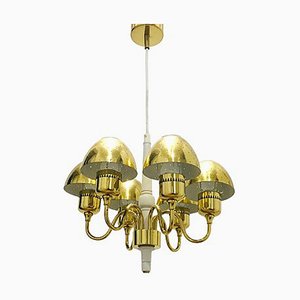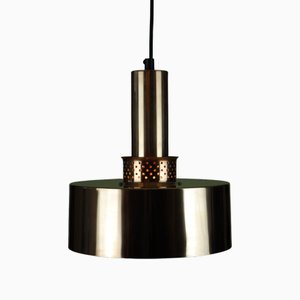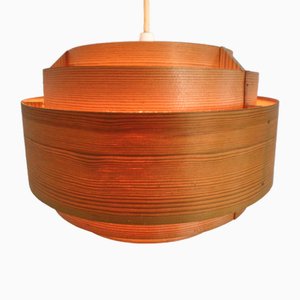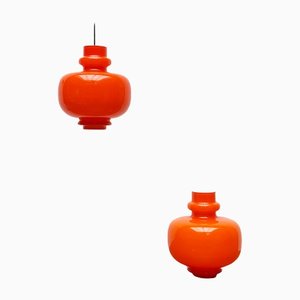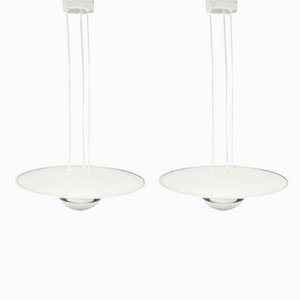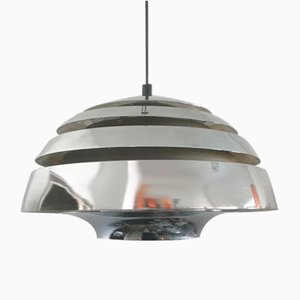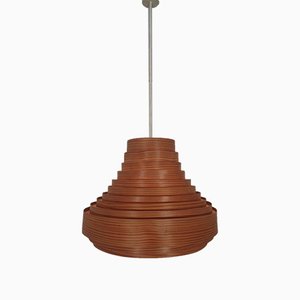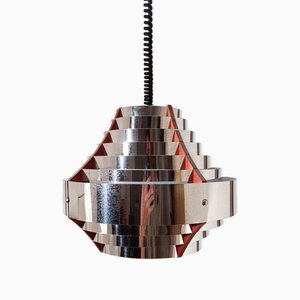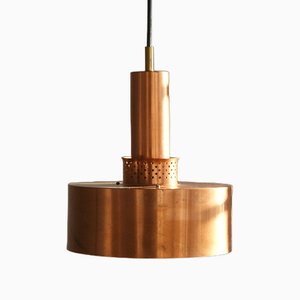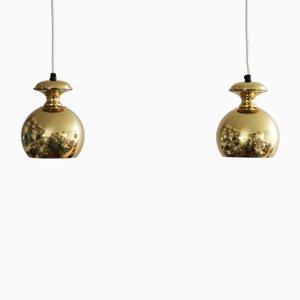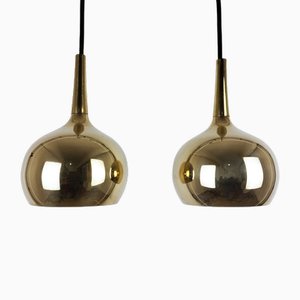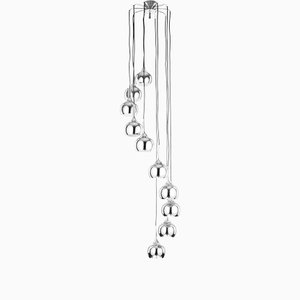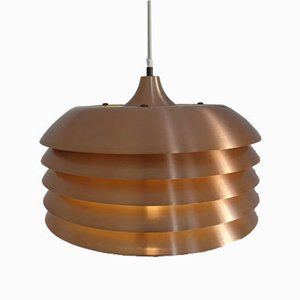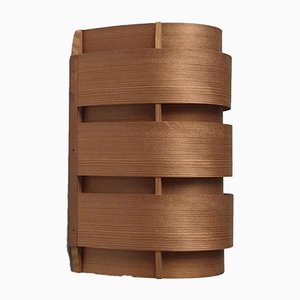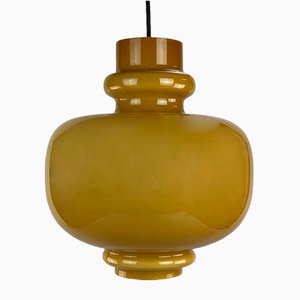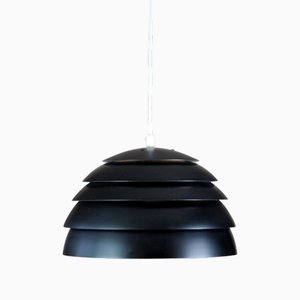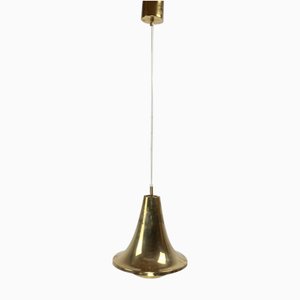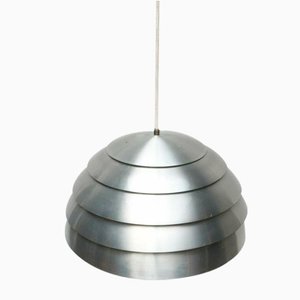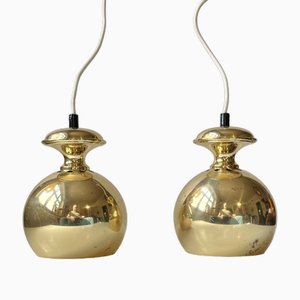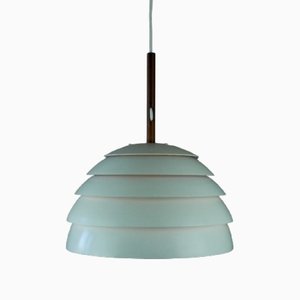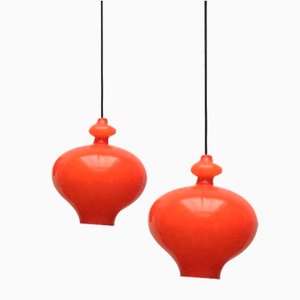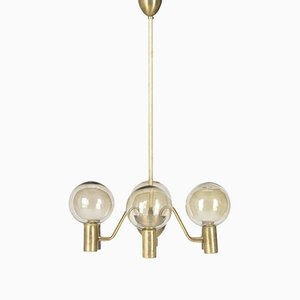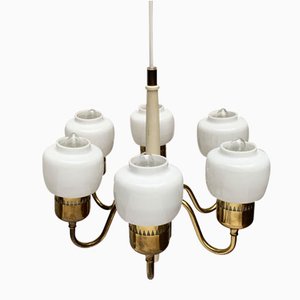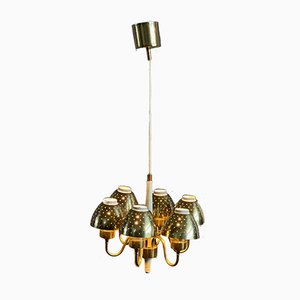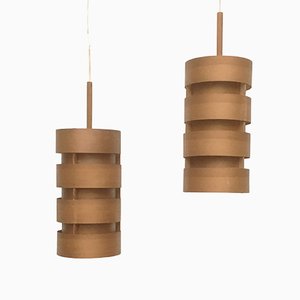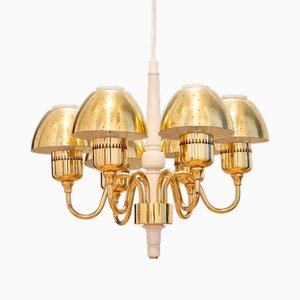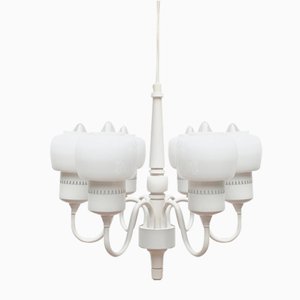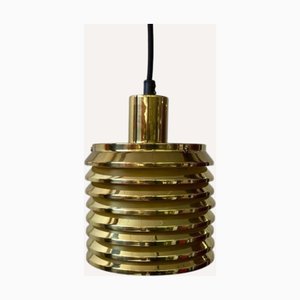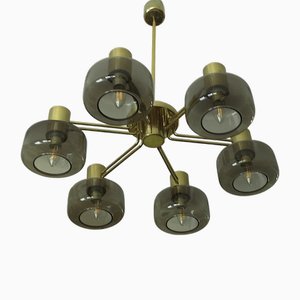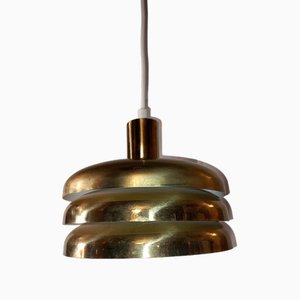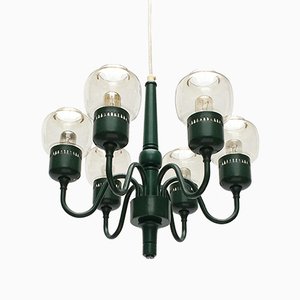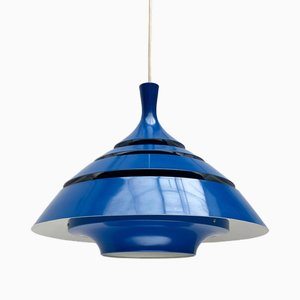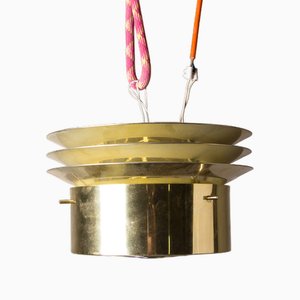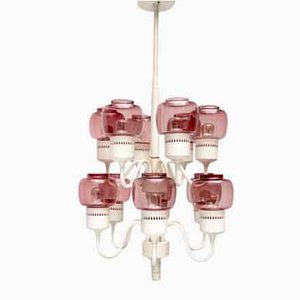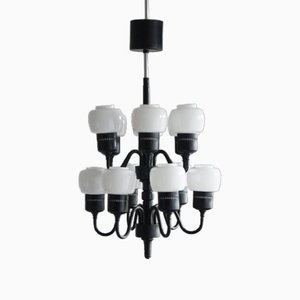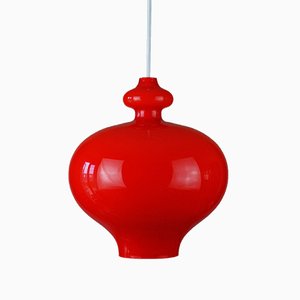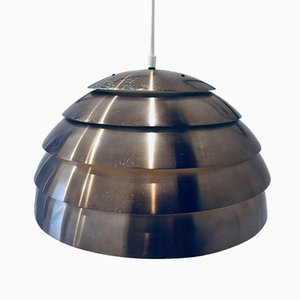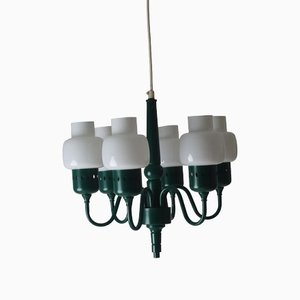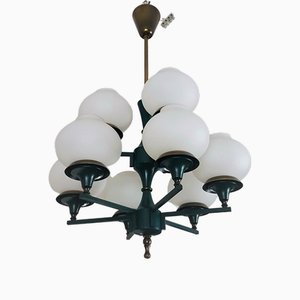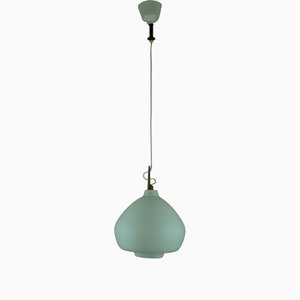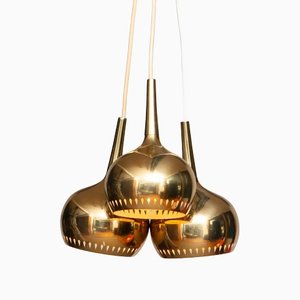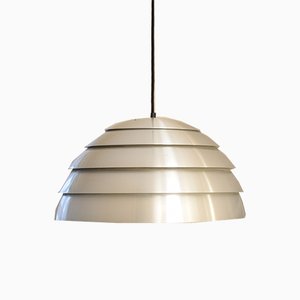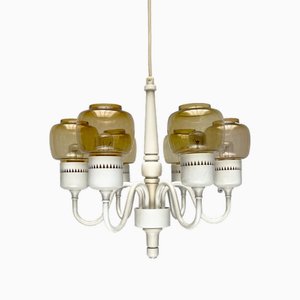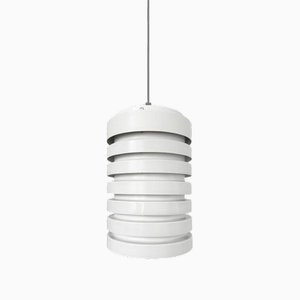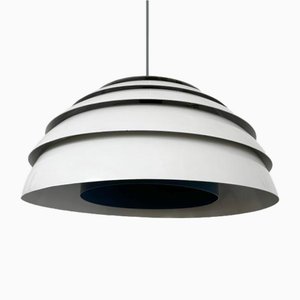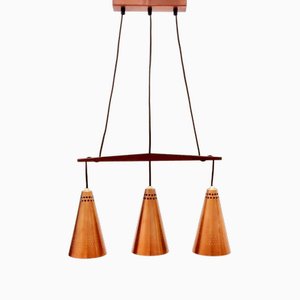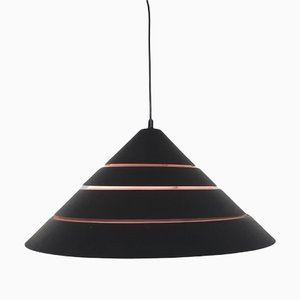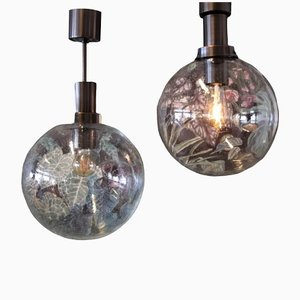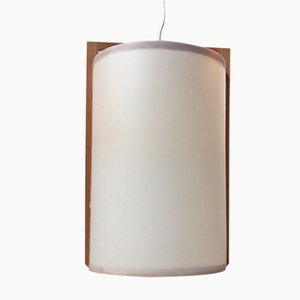
Active between the 1950s and '70s—in the golden age of Scandinavian design—Swedish interior decorator and furniture designer Hans-Agne Jakobsson (1919-2009) is best remembered for his softly glowing, glare-free lighting fixtures, which were inspired by the "organic modern" approaches of Danish lighting master Poul Henningsen and Finnish icon Alvar Aalto. Though lesser known today than many celebrated midcentury lighting designers like Jo Hammerborg and Verner Panton, Jakobsson created a range of pendants, floor lamps, wall lamps, and table lamps that showcase a penchant for diverse materials and forms, as well as a deep understanding of lighting effects.
Jakobsson was born in Havdhem on the island of Gotland in Sweden in 1919. He first apprenticed as a carpenter and then continued his education in Gothenburg, graduating with a degree in architecture. He was hired by General Motors as an industrial designer and subsequently worked as an assistant to both Carl Malmsten (1888-1972)—one of the most prominent figures in Swedish design—and Werner West (1890-1959).
In 1951, Jakobsson founded his eponymous furniture manufacturing company, Hans-Agne Jakobsson AB in Markaryd, Sweden, which is sometimes referred to as AB Markaryd. Although Jakobsson designed and produced various types of furniture, his lighting received greater international attention. Experimenting with a wide range of materials—including brass, iron, glass, fabric, and wood shavings—Jakobsson mastered both the direction and color of light. His designs are known for their hidden bulbs and streamlined ornamentation, which created diffused, muted lighting.
Jakobsson’s career was prolific to say the least. His company produced over 2,000 separate lamps in fifty years. Jakobsson’s own body of work includes laminated pine pendant lamps, large bulbous glass chandeliers, all manner of muted lighting, and even Pop Art-inspired sconces. Examples include the outdoor light Tratten S2064 (1954), Estrella V258 Wall Lamp (1950s), Lamingo T325 Celling Light (1950s), his pinewood cylindrical B128 Table Lamp (1960s), BN26 Table Lamp (1960s), and Diana V155 Wall Light (1960).
One of Jakobsson’s best known designs—often referred to as the Laminated Pine Pendant—is believed to be the happy result of a temporary solution to a glaring light in Jakobsson’s Christmas display shop window in the mid-1950s.Wishing to defuse the bright light, he fashioned a pendant out of pine wood chips, which admirers were soon seeking to buy. Jakobsson began producing this design from his own factory in the late 1950s and achieved international success. Around 1970, Jakobsson’s design for a very similar laminated pine lamp was picked up by IKEA. This model was not produced in Jakobsson’s factory but by his partner, Ellysett AB, who manufactured several of Jakobsson’s designs. Ellysett was subcontracted by IKEA (also based in the town of Markaryd), and the pendant was soon sold around the world.
In the 1970s, Jakobsson launched a collection by Swedish designer Torsten Orrling, which referenced Pop Art using sheets of brass, copper, aluminum, and the plastic-like astralite and which showed the influence of Verner Panton. This was one of only a few lines produced by Hans-Agne Jakobsson AB that was not designed by the founder himself.


